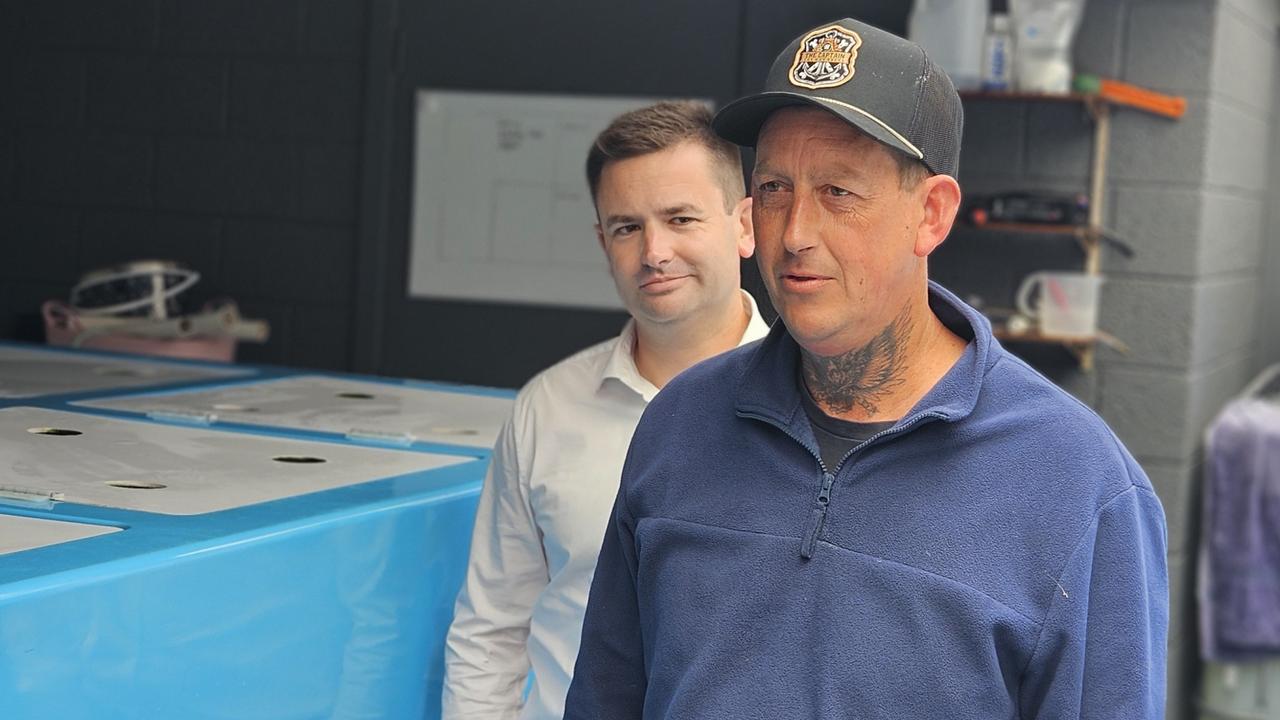Coroner’s findings bring closure years after death of top search and rescue pilot Roger Corbin
“Nothing is going to bring him back, and that’s the outcome for us.” The family of veteran rescue helicopter pilot Roger Corbin have spoken out about his legacy in the wake of inquest findings.

Tasmania
Don't miss out on the headlines from Tasmania. Followed categories will be added to My News.
Almost seven years after the helicopter crash death of veteran rescue pilot Roger Corbin, a coroner has handed down her findings into what led to the tragedy.
But for Mr Corbin’s widow and daughters, they already had their answer – “that he’s gone”.
On Thursday, Coroner Olivia McTaggart published a 56-page document explaining what led to the AS350 Squirrel crashing at Hobart Airport during a training exercise on November 7, 2017.
The findings have brought the proceedings, which have been “hanging over the heads” of Mr Corbin’s family, to a close.
The finalisation has also brought some closure to the pilot Mr Corbin was training on the day in question, John Osborne, who was learning to land the aircraft in an emergency without the use of hydraulics.
“At the end of the day, nothing is going to bring him back, and that’s the outcome for us,” Mr Corbin’s widow, Allana, told journalists after the findings were handed down.
“The coronial inquest, it wasn’t something we were wishing for that we had all the answers. We had the answer, and that was that he’s gone.
“It’s time for us now to be able to move forward with our lives, keep servicing the community.”
Mrs Corbin said her family was aware there were many factors that may have contributed to the crash, that they were “never actually really going to know”, and that she had accepted that.
“We do know that at the time, he would have done absolutely everything he could have to get that aircraft on the ground – we know that for a fact,” she said.
Mrs Corbin became the first woman to circumnavigate Australia solo in a helicopter in 1997, after surviving a helicopter crash seven years prior.
Mr Corbin’s 18-year-old daughter Isabelle, who is just weeks away from getting her commercial helicopter licence, said her father was “always with us”.
“We feel it all the time,” she said.
“Nothing was done small. Everything was a joy in life for him. You never forgot him once you met him.”

Surviving pilot John Osborne, who was injured in the crash, described Mr Corbin as an “elite mentor of other pilots”.
“His death is a tragedy for his family, his kids, but it’s also a loss for the industry, which has lost one of those elite mentors.
In her findings, Ms McTaggart said Mr Corbin, 57, was the chief pilot, chief flying instructor and managing director of helicopter company Rotor-Lift Aviation, played a major part in establishing helicopter rescue operations in Tasmania, and had 30 years’ flying experience.
The coroner said he played a “critical role in saving many lives”.

She also said Mr Osborne was a competent helicopter pilot, and made no criticisms of his actions.
Ms McTaggart found the French-made helicopter was in sound mechanical condition and that a fault in the hydraulic cut-off switch did not contribute to the crash.
However, she found that Mr Corbin did not conduct a pre-flight briefing with Mr Osborne about the emergency hydraulics failure procedure, and did not demonstrate the sequence before asking his student to perform it.
Ms McTaggart also found the exercise was performed in a crosswind, instead of into the wind – as recommended – which increased the difficulty controlling the helicopter while landing.
She said the helicopter then entered a hover state, unintentionally, which increased the force on the controls – which likely became unmanageably heavy for Mr Osborne to manoeuvre back into a controlled state.

Ms McTaggart concluded that Mr Corbin misjudged the time at which it was necessary for him to intervene, and that hydraulics were restored at a time too late to regain control of the aircraft.
“I have no doubt that Mr Corbin, as pilot in command, would have been actively trying to save the aircraft and their lives to the extent that he could in those final seconds,” she said.
The coroner also noted evidence that emergency hydraulic failure training in an AS350BA helicopter had a “famously high rate of accidents”.
Noting Rotor-Lift had since updated its training school operations manual, Ms McTaggart did not make any recommendations as part of her findings.
More Coverage
Originally published as Coroner’s findings bring closure years after death of top search and rescue pilot Roger Corbin





